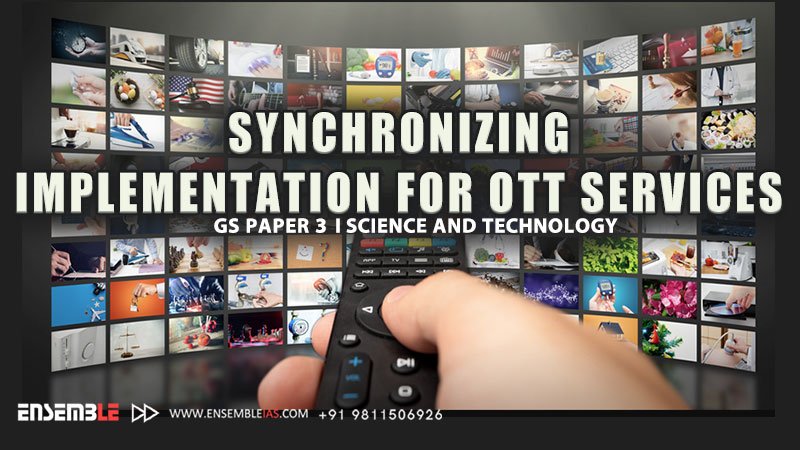Synchronising implementation for OTT services Gs Paper 3 Science and Technology
The Telecom Regulatory Authority of India (TRAI) invited responses to a b consultation paper it released on a regulatory mechanism for over the top (OTT) communication services.
TRAI
The National Telecom Policy was formulated in 1994, which eventually led to the setting up of Telecom Regulatory Authority of India.
This was primarily done to regulate public and private telecom companies.
Later, This was followed by Telecom Policy, 1999. These policy endowed TRAI with more power to regulate the telecom issues.
Formation of BSNL took place with internet getting introduction in the Indian markets
The link to join the course : Online Courses
Key Functions of TRAI
- To confirm compliance with terms of license and reassess of the same non-compliance
- To put forward the need for and timing of introduction of new service provider and term and conditions of license to service provider
- To guarantee technical compatibility and interconnect between different service provider and regulate their revenue sharing arrangements.
- To stipulate and confirm time period for providing and local distance circuits.
- To ease competition and promote efficiency in operations to promote the growth of telecom services.
- Give protection to consumers’ interest, monitor quality of services, inspection of used equipment in network and make recommendations about such equipment.
The conflict between TSPs and OTTs:
Telecom Service Providers are of the opinion that OTTs should be regulated and charged because they use and thrive on the infrastructure built by operators over the years. Currently, they aren’t.
“OTT communications services have led to erosion of revenues for the telcos.
- These platforms offer users an array of services, sending of Multimedia Messaging Services (MMS), and instant messaging to voice and video calls, delivered over the internet.
This circumvents the need for traditional telecom services, particularly voice calls and text messages, leading to a significant reduction in the revenue streams of telecom companies.
- OTT communication service providers neither contribute to the exchequer nor make investments like the TSPs in spread of network infrastructure in the country.
- The OTT communication service providers take a free ride on TSP funded networks without contributing to the setting up and maintaining digital infrastructure for access networks.
The need for demand OTT:
“There should be a policy framework to enable fair share contribution from large OTT service providers to telecommunication network operators based on assessable criteria like number of subscribers or data usage.
- To ensure fairness and compensate for the increased data demands, it is justifiable for OTTs to pay a fair and reasonable fair share charge to TSPs.
Best Online Coaching for Civil Service_IAS_ UPSC_IFS_IPS
Free Study Material ENSEMBLE IAS ACADEMY | Call +91 98115 06926 | Visit us:- https://ensembleias.com/ | Online Store: https://online.ensemble.net.in/
#TRAI #OTT #Telecom_service_provider #telecom_companies #cellular_operator #internet #mobile#science#technology #GOI #upsc_GS_paper #GSPaper #mcq #correct_answer #civilservicesstudy #ensembleiasacademy #geographyoptional #k_siddharthasir #strategicthinker #ias #civilservices #upsc_motivation #upsc_aspirants #upsc_exam #trendsingeography
Source: The Hindu





